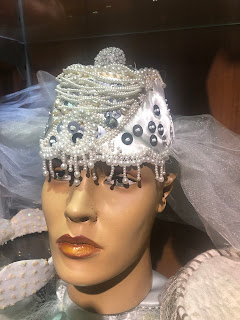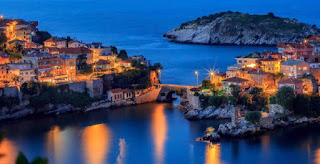Cappadocia, Konya and Pamukkale: Chapter One
I last visited Cappadocia 51 years ago. Back then farmers on donkeys and women in baggy trousers went about their business and tilled the land to eke out a meager living. There were few, if any tourists. You could wander into underground cities and fairy chimney churches often without paying and with little or no security to bother you. So the chance to return with a guided bus tour to see the development and massive explosion of tourist attractions was too inviting to miss.
I joined a group of 13 ex-pats on a spectacular six-day journey organised by YESIDO, a boutique tour company we had used before.
The itinerary was too extensive to cover in one blog post so I will split it into three. We flew to Kayseri from Izmir, to be met by driver Ali and guide Volkan.
When I was younger I would have baulked at such a trip. But these tours not only reveal sites you could easily miss, they save you a lot of money through group discounts. The five hotels we used, for instance, would have cost a couple between 92 and 110 Euro per night (including breakfast). But here each person paid only 600 Euros, for the whole tour, which included Volkan's expert knowledge and Ali's driving of more than 1,200km from Kayseri eventually back to Kusadasi. The bus even has phone-charging points and its own wi-fi.
Overlooking most of the area is the Erciyes mountain....(known as Argaeus, an inactive volcano)....a well-developed and popular ski resort in winter.
We headed from the airport to the Aja Cappodocia Hotel hotel (https://www.ajacappadocia.com) in Ürgüp. But first, we were taken to see fields of buffalo and wild horses, and women picking mushrooms, flanked by a wide canal. Volkan had cunningly pre-arranged to slip a cowboy 300TL (about £12.50) to show us his horse riding skills while rounding up 200-300 wild horses. If locals need real horse-power they just round them up and let them free after the work is done.
Buffalo
Canal
Volkan explained how in Ottoman times, probably from the 13th century, warriors on horseback used to put raw meat under their saddles and turned it into pastrami by using the sweat from the horse's back.
Cowboy
The cowboy performed near a village containing several derelict stone buildings.
We soon found ourselves checking into our fabulous family hotel, in Ürgüp, converted from a 200-year-old stone building and full of antique ornaments, guns, musical instruments and farm implements.
Nargile, (shisha pipes)
Ürgüp
Old projector in Ürgüp
The following morning after a lavish Turkish breakfast we set off for the underground city of Kaymakli. Almost 49 years ago I visited a similar attraction called Derinkuyu in nearby Nevşehir Province. Derinkuyu, like Kaymakli, is thought to have first been established around the seventh or eighth century BC. Later it grew to at least eighteen levels and sheltered up to twenty thousand people. There were rooms for stables, accommodation, churches, storage and even a winery. Doorways made of massive stone wheels could be rolled in front of an entrance, to make an impenetrable wall. Thousands of ventilation shafts and water courses provided fresh air and drinking water. It was a breathtaking site. But incredibly the entrance was an inconspicuous metal door about four feet square at ground level. It was like accessing the British Natural History Museum via a manhole cover.
Kaymakli was very similar but only extended to nine levels. However, unlike 1974, entry was through a huge reception area, and without the wonderful 60TL museum card (available to resident's permit holders) the entry cost was 250TL (more than £10). The caves have often been used as places of refuge, notably after the region fell to the Seljuk Turks (from Persia). But they were still used into the 20th century to hide from the Ottomans.
We moved from ancient caves to modern pottery...indeed a modern art gallery and pottery centre carved into a cave by the wealthy Guray family. You can visit their website here...or cut and paste the URL.




































George you live such an interesting life and I love watching your videos. I do have your book but unfortunately no time for reading at the moment. I particulary liked the hotel. It was stunningly beautiful. Thank you so much for sharing.
ReplyDeleteGreat ! Thank you
ReplyDelete